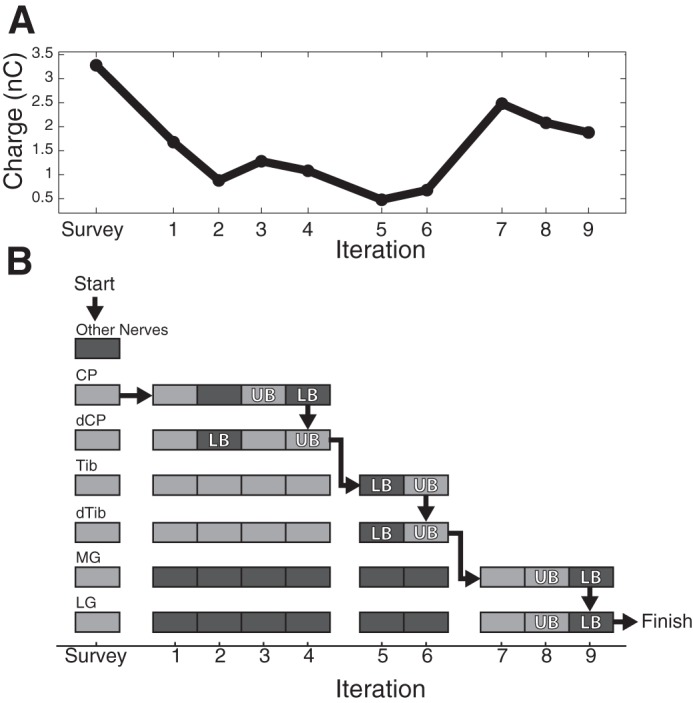Fig. 3.

A binary search over stimulation charge was used to find the threshold of each nerve recruited by each dorsal root ganglion (DRG) stimulation electrode. A: the charge injected at each iteration of the binary search. B: whether a response was detected (light gray) or not (dark gray) in each nerve at each stimulus charge. The survey amplitude was used to determine which nerves were recruited by this electrode to limit the scope of the search. Following the survey, the search started with the common peroneal (CP) cuff and proceeded until the upper (UB) and lower (LB) bounds on the recruitment threshold for this cuff were within 0.25 nC/phase. Although the search started with CP, the detection algorithm was run on all the other cuffs such that, by iteration, four thresholds had been found for both CP and distal common peroneal (dCP). Execution continued in this manner until the threshold for all cuffs was determined.
